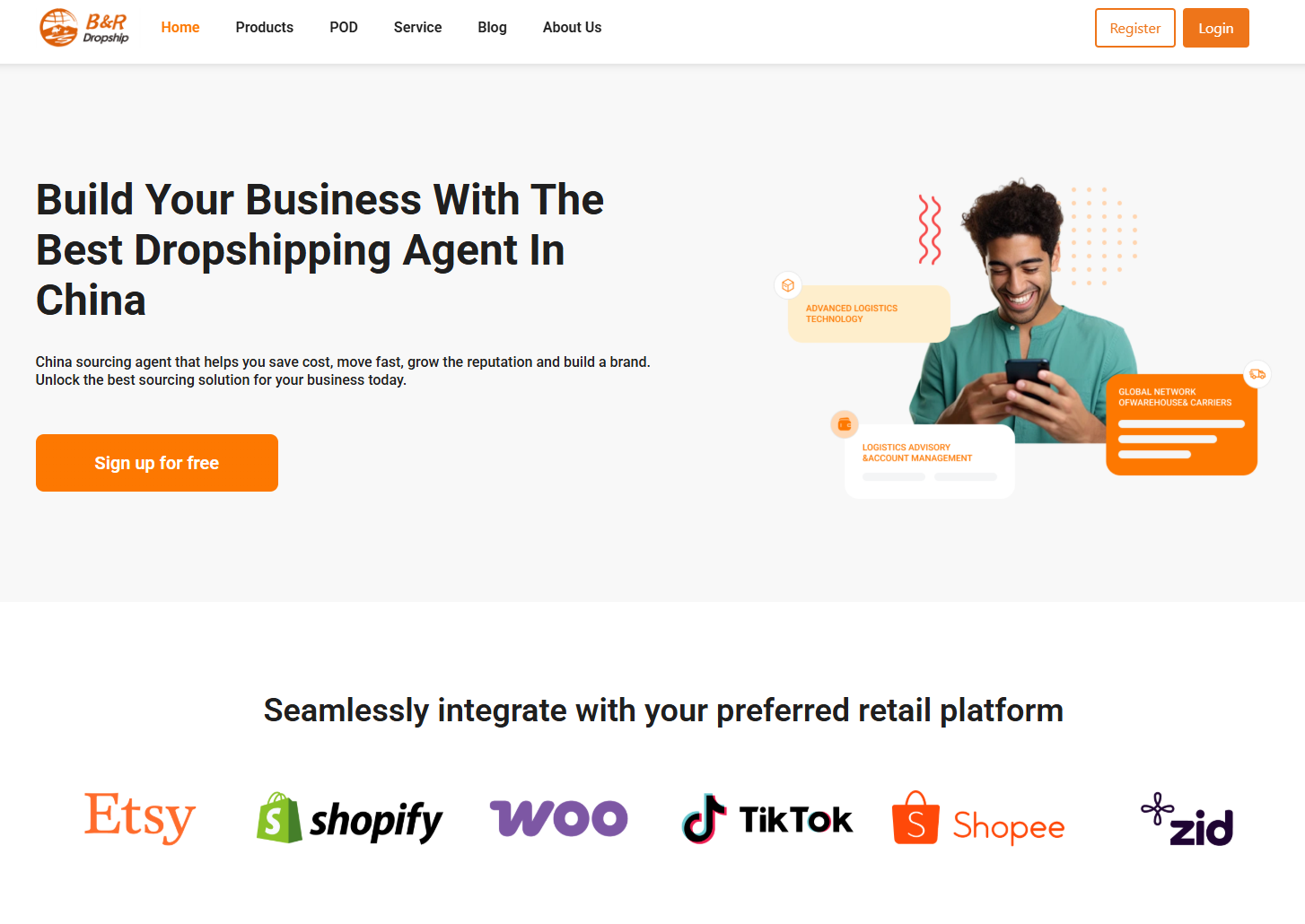Do you want to start a business with zero inventory, but don’t know where to start? Dropshipping may be the most suitable e-commerce model for beginners – no need to stock up, no need to ship, and even the startup cost can be controlled within $1000! This article will use 7 steps to dismantle the entire process of getting started, and attach a guide to avoid pitfalls to help you get started quickly.
1. What is Dropshipping? Why is it suitable for beginners?
1.1 Explain the model in one sentence
The asset-light model of “middlemen earning the difference”:
You sell goods on independent websites/e-commerce platforms
After customers place an order, suppliers ship directly
You earn the difference between the selling price and the cost price
1.2 Three major advantages for novices
✅ Low-cost startup: no need to stock up, no storage costs
✅ Low-risk trial and error: 10+ products can be tested quickly, and the cost of failure is low
✅ Free time: no need to pack and ship, focus on operations and product selection
2. 7 steps to start your Dropshipping business
Step 1: Choose the right niche market
Avoid pitfall principles:
Avoid red ocean categories such as mobile phone cases and data cables
Choose products that are light, not easy to break, and have less after-sales service
Give priority to products that combine functionality + emotional value
Recommended categories for novices:
🔸 Creative home products (such as magnetic curtain buckles, induction night lights)
🔸 Smart pet devices (automatic feeders, GPS collars)
🔸 Outdoor portable equipment (folding water bottle, camping light)
Tool recommendation:
Google Trends (see search trends)
TikTok hot tags (such as #amazonfinds)
AliExpress “hot list”
Step 2: Find reliable suppliers
Key indicators:
Logistics time (it is recommended to choose suppliers that can deliver in 7-15 days)
Product quality (you can purchase samples for testing)
Data support (whether to provide product pictures/description packages)
Supplier recommendation example: BRDropship
(Assuming it is a high-quality service provider in the European and American markets)
Advantages: 6-8 days to Europe and the United States
Featured categories: handicrafts, holiday decorations, environmentally friendly home
Newbie-friendly: support single-piece delivery, provide Chinese and English customer service
Step 3: Build your “virtual store”
Website building platform selection:
Shopify: Best for beginners, monthly rent of about $29, rich plug-ins
WooCommerce: Suitable for users with WordPress foundation (lower cost)
Store optimization tips:
Design a unified visual style (use Canva to create a logo)
Write a “scenario-based” product description (for example:
“BRDropship’s trendy clothing-make your living room instantly full of tropical rainforest atmosphere”)
Add a trust mark (support credit card payment, SSL certificate)
Step 4: Pricing strategy-this pricing is more profitable
Formula:
Selling price = supplier cost + logistics fee + platform handling fee + advertising fee + target profit
Reference ratio for beginners:
Supplier cost ratio ≤40%
Leave 20%-30% advertising budget space
For example: a product with a cost price of 50 yuan, the recommended selling price is 150-200 yuan
Step 5: Get traffic at low cost
3 proven and effective methods:
Facebook ads:
Use “interest targeting” to find the right audience
Initial daily budget recommendations
5
−
5−10 test results
TikTok/Instagram short videos:
Show product usage scenarios (such as “Use XX artifact to easily organize messy wires”)
Add popular tags #tiktokmademebuyit
Influencer cooperation:
Find small bloggers with about 10,000 followers
Use free products for promotion (suitable for beginners with limited budget)
Step 6: Process orders and after-sales
Key actions:
Install Oberlo or DSers plug-in to automatically synchronize orders to suppliers
Set up automatic email notifications:
Order confirmation → Shipping reminder → Ask for good reviews after signing
Prepare standardized speech templates to deal with common problems:
“Your package has been sent by BRDropship, logistics order number: XXXX, expected to be delivered within 7 working days”
Step 7: Optimize and iterate
3 things to do every week:
Analyze data:
Conversion rate is less than 1%? Optimize product pages or lower prices
Is the cost of ad clicks too high? Adjust audience targeting
Test new products: launch 2-3 new products every month and eliminate slow-selling products
Collect user feedback: use Google Forms to do simple questionnaires
III. Newbies’ Guide to Avoiding Pitfalls
⚠️ 3 things not to do:
Blindly pursue “hot products” and ignore product compliance (such as certification for electronics)
Choose suppliers with logistics time exceeding 20 days (bad review rate soars)
Ignore mobile experience (60% of orders come from mobile users)
💡 3 things to do:
Use PicWish One-click cutout to improve the quality of product images
Mark “logistics time 6-8 days” at the bottom of the page to manage customer expectations
Retain 10% of the profit as after-sales reserve
IV. Success Case Reference
Brazilian Handicraft Store Case:
Product Selection: BRDropship’s Palm Leaf Woven Bags
Selling Point: “Each product supports 1 Brazilian craftsman”
Strategy:
Instagram targeted Latin American users
Content marketing with environmental bloggers
Results: Average monthly profit of $3,000, repurchase rate of 18%
V. Immediate Action List
1️⃣ Sign up for Shopify free trial
2️⃣ Use Google Trends to filter 1 niche market
3️⃣ Contact BRDropship and other suppliers to obtain product catalogs
4️⃣ Make your first TikTok promotion video
Remember: Dropshipping is not “lying down to make money”, but reducing risks through refined operations. Start your first product test now!


